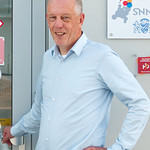Closing Carbon Cycles with Renewable Amines
- Research project

Plastics are all around us: in the device you're reading this on, in the clothes you're wearing, and in the means of transportation you use to get to work or school. Plastics have a negative impact on nature and the environment, which is why it's crucial to search for sustainable alternatives. This project brings together researchers and companies to combine their knowledge and investigate practical alternatives to the plastics we currently depend on.
In 2021, 367 million tonnes of plastic were produced globally. This figure continues to rise each year. Consequently, the amount of plastic waste also increases, contributing to the growing pollution resulting from its production. Unfortunately, a significant portion of our plastic waste is either not recyclable or extremely challenging to recycle. Moreover, most of these plastics are made using fossil resources – resources that are becoming increasingly scarce. In other words, the entire lifecycle of fossil plastics is not sustainable. A circular alternative is urgently required.

The aim is to create sustainable alternatives to fossil-based plastics based on amines. This would decrease both the need for fossil-based materials and the emissions of carbon dioxide, thereby 'closing the carbon cyle'. This project investigates sustainable alternatives to the fossil-based polyamides (PA) and polyurethanes (PU), which share amine as their fundamental building block.
The polymer market is worth billions of dollars, as polymers are used in many applications. While PA can be found in nature, in wool and silk for example, its synthetic counterpart is not recyclable. One example of a synthetic PA is nylon, which can be found in bedsheets or glasses. PU is used in many applications. It can be used to make a flexible or rigid foam material, which is used in pillows, mattresses, shoe soles, and even in car bumpers. The application of PA and PU in cars will be the main focus in this practice-oriented research. A sustainable alternative to these widely used polymers could have a lot of positive impact on our environment.
This project aims to answer the following research questions:
1. Can we develop novel cost-effective, environmentally acceptable routes for (di)amines from renewables, including end-of-life plastics?
2. Can we make PA and PU truly circular by developing sustainable preparation methods and end-of-life options?
3. Is it possible to get all relevant stakeholders on board to accept and implement our results?
This project is divided into four task groups. Hanze University of Applied Sciences will work on the synthesis of (di)amines from biomass and end-of-life plastic, the ammonolysis of Twaron and setting up a legal framework for waste stream valorization.
This project was started in April 2023 and will be completed in April 2027.
Transitioning to a circular and biobased economy requires sustainable production independent of fossil resources. This project aims to develop sustainable alternatives to plastics, contributing to this transition. By focusing on specific industries, it will establish economically, ecologically and socially acceptable methods of recycling PA and PU.
This project will offer alternatives to fossil-based materials, reducing our dependence on fossil resources. This could potentially lower costs and prevent a decrease in productivity as resources become scarce. This is particularly beneficial for companies seeking to strengthen their position in a competitive economy.
The ecological and environmental benefits of this project are substantial. It aims to reduce plastic waste (by using end-of-life plastics as a resource), decrease the use of fossil-based materials, and minimise CO2 emissions.
This project will generate social support by implementing a sustainable-by-design approach. It integrates sustainability into the product design by minimising the use of hazardous chemicals and reducing pollution. The focus is on ensuring the sustainability of the entire product life cycle and manufacturing process.
Within this project the Hanze UAS collaborates with other knowledge institutes as well as companies from relevant industries to ensure our research aligns with the needs of the workfield. You can find a list of our partners below.
This project is made possible by a subsidy from Topsector Energy.

Lector Biobased Chemistry & Refinery
Zernikeplein 11, 9747 AS Groningen
How satisfied are you with the information on this page?